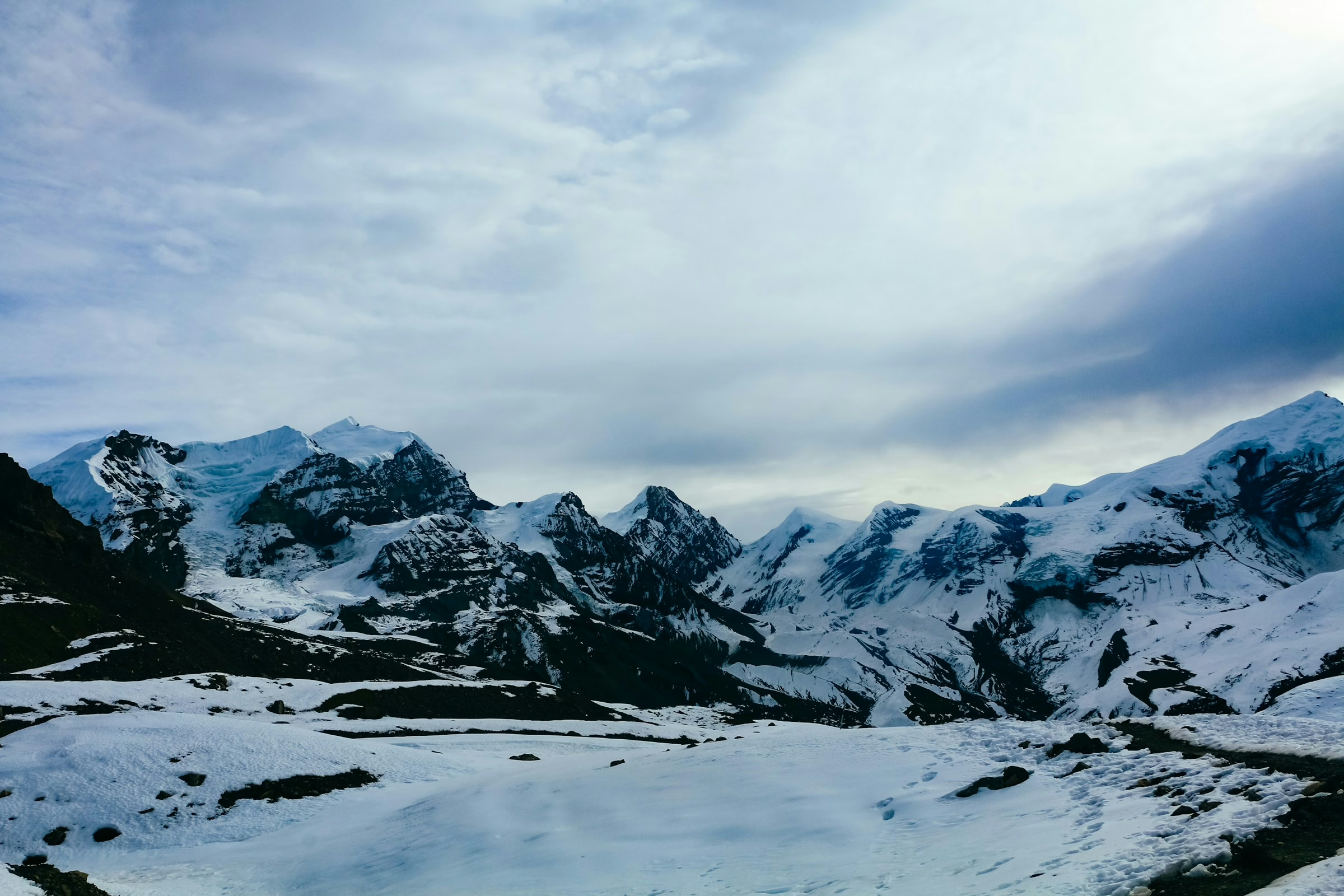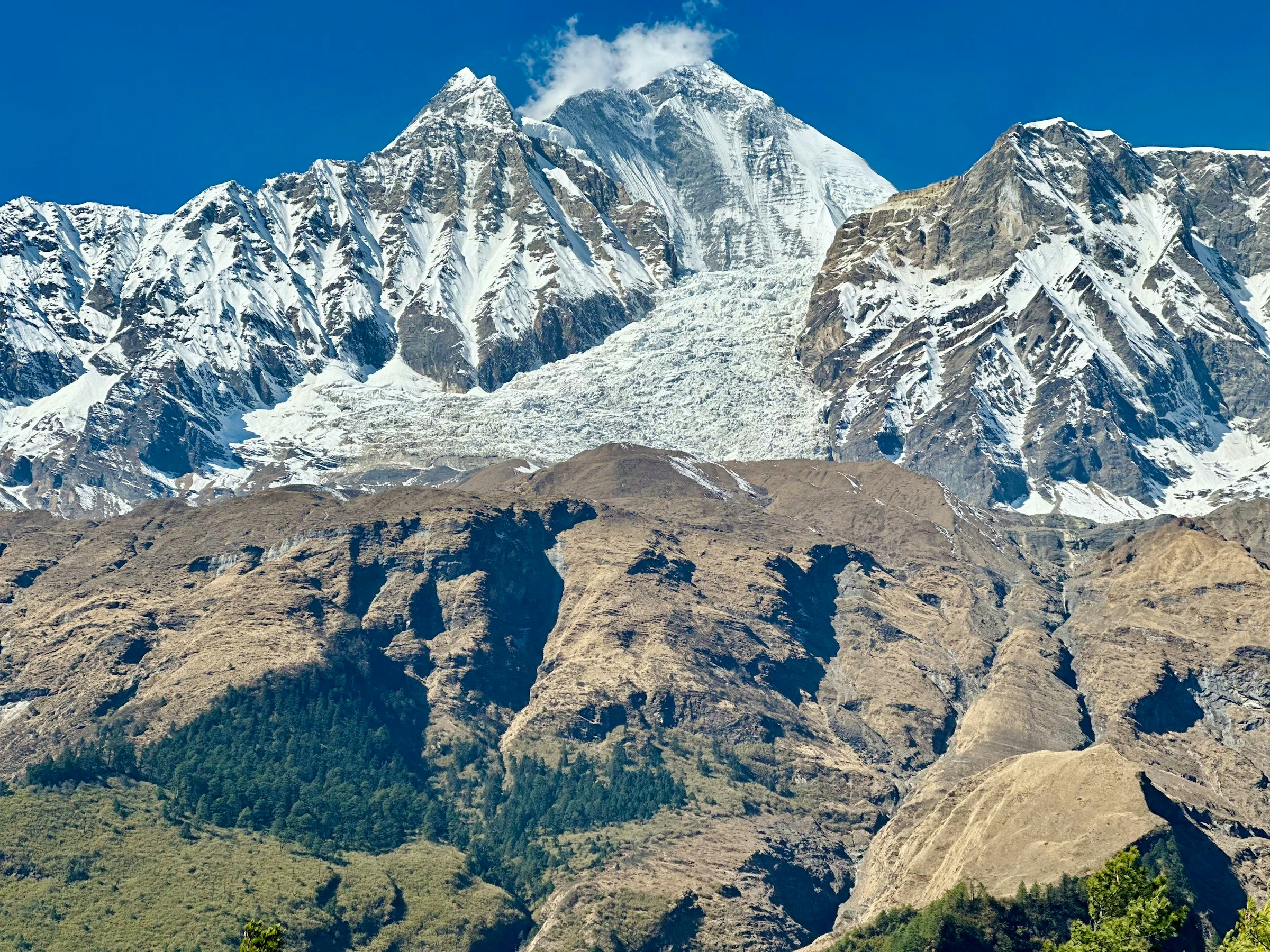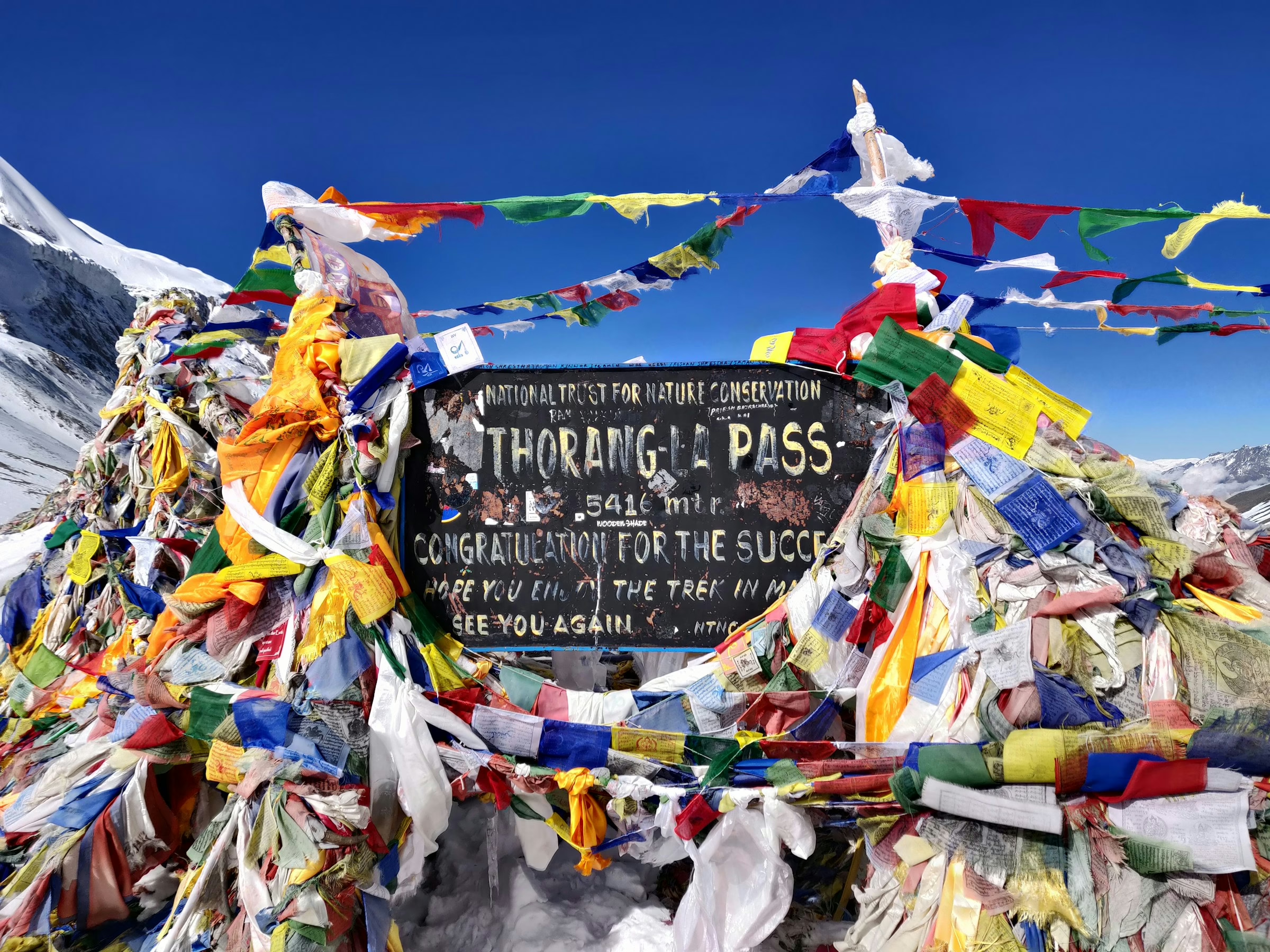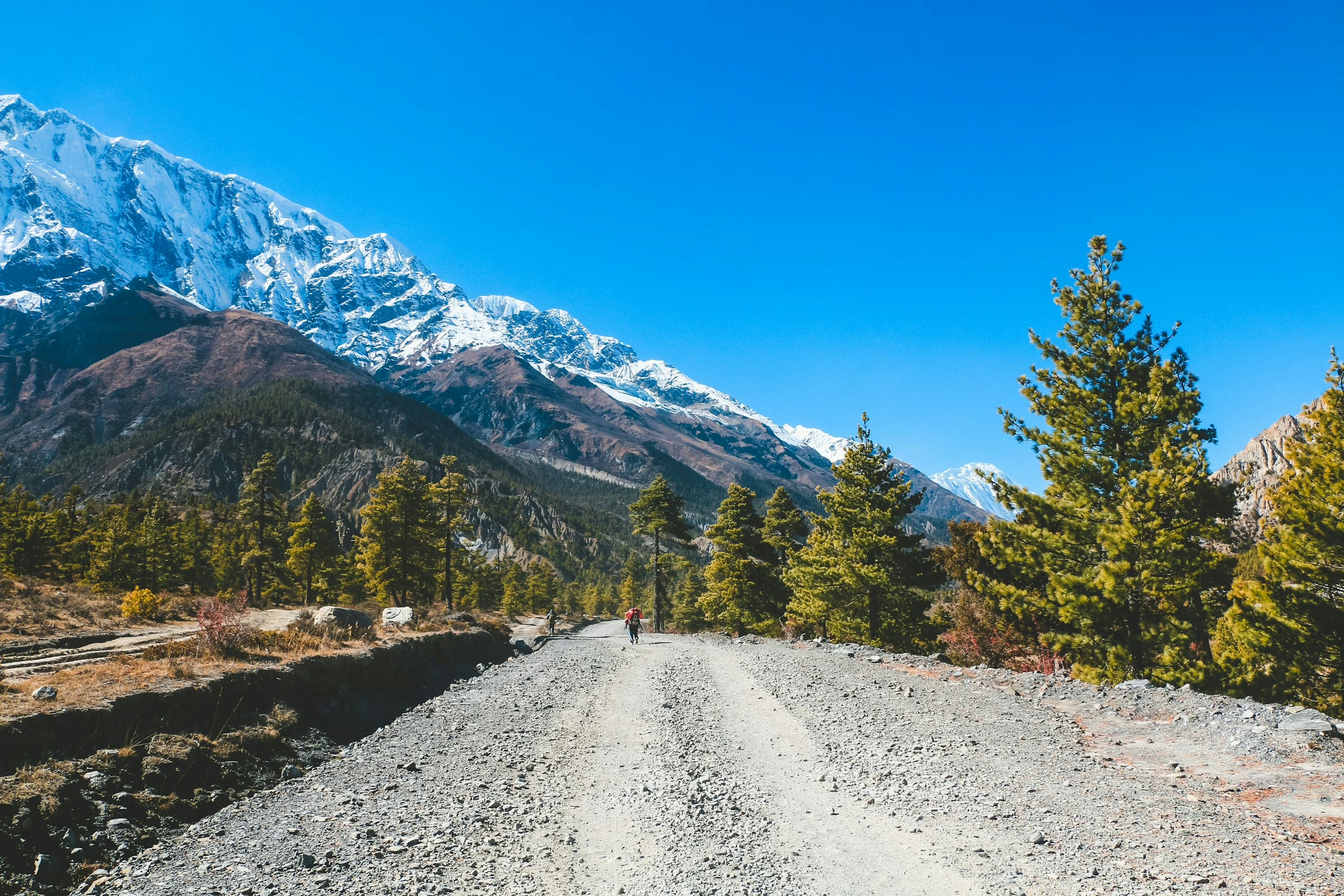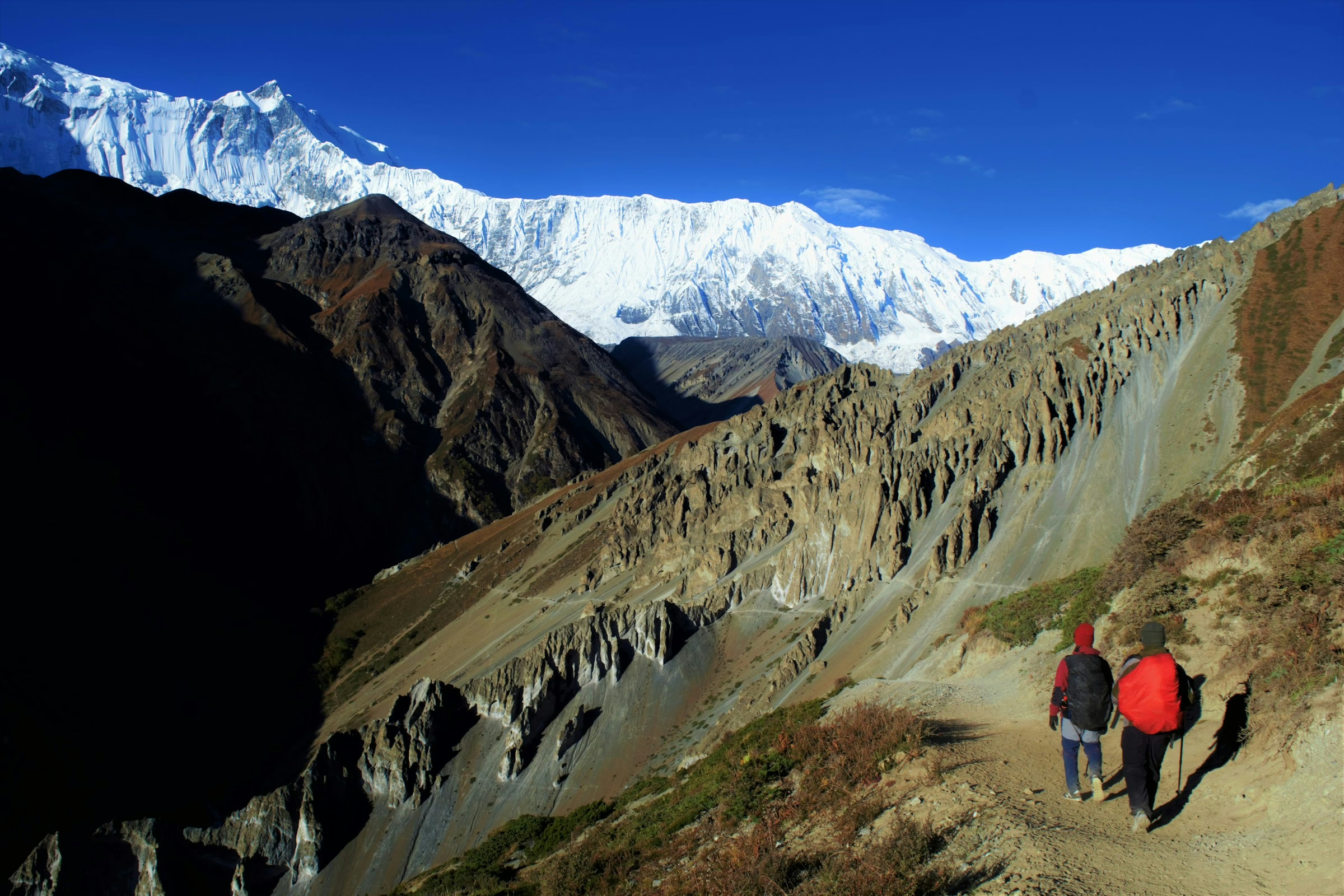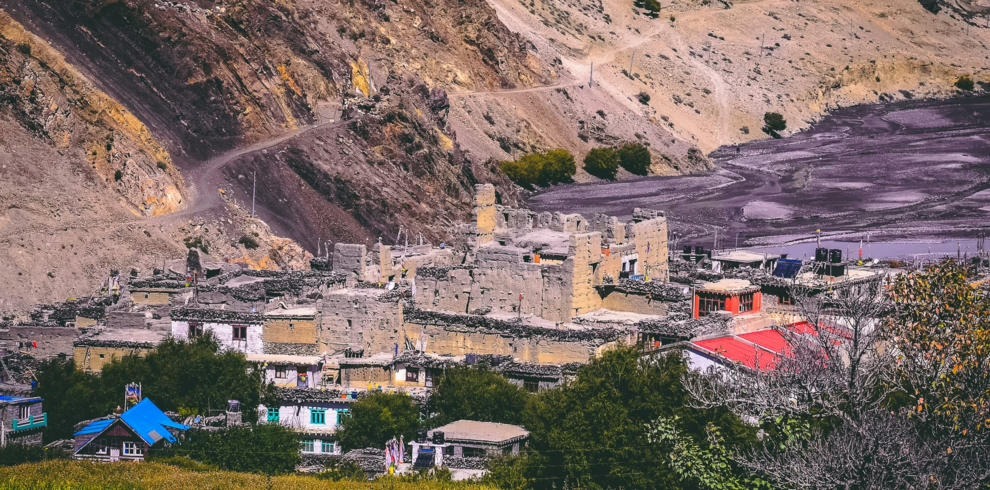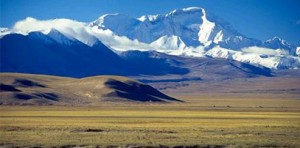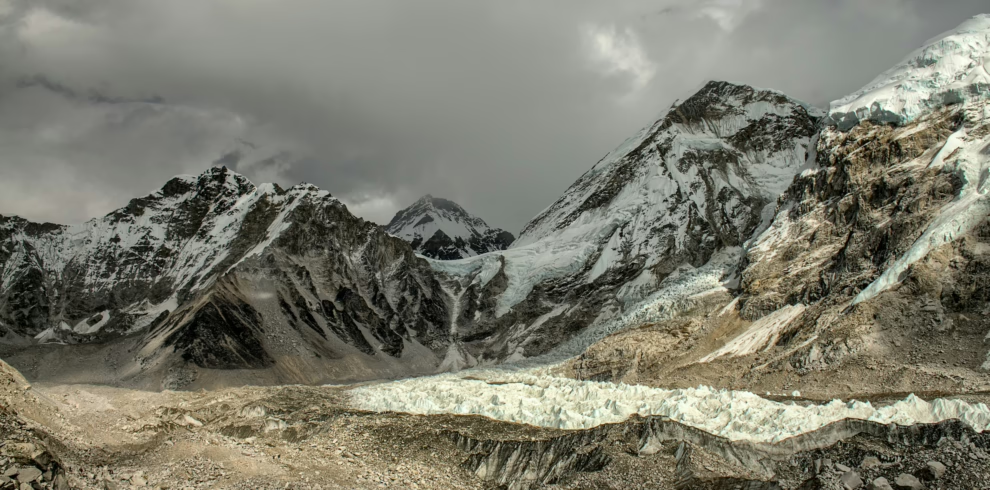If you’re looking to experience the Annapurna Circuit Trekking in a more remote, adventurous way, consider the captivating route that winds through the secluded valleys of Nar and Phu and leads to the stunning high-altitude Tilicho Lake. This trek offers a rare glimpse into untouched Himalayan beauty and the preserved Tibetan Buddhist culture of the Nar Phu Valley—truly one of Nepal’s hidden treasures.
Nestled in a restricted region, Nar and Phu require a special permit and a licensed guide, ensuring a more exclusive and intimate trekking experience. As you journey through this rugged terrain, you’ll find yourself surrounded by landscapes that echo the mystical highlands of Tibet—dramatic rock formations, icy glaciers, lush forests, and remote Tibetan-influenced villages.
Along the way, you’ll cross the formidable Kang La Pass, marvel at the turquoise waters of Tilicho Lake, and walk through ancient stone villages that seem frozen in time. This extended version of the Annapurna Circuit is perfect for trekkers seeking solitude, scenery, and a deeper connection with Himalayan culture.
21 days / 20 nights Annapurna Circuit trip
Adventure Lives in the Annapurna Region
Highlights
- Complete the classic full circuit trek — one of the world’s greatest trekking adventures.
- Cross the challenging Thorong La Pass (5,416 m), the trek’s highest and most thrilling point.
- Explore diverse landscapes, from terraced rice fields and rhododendron forests to alpine meadows and barren high-altitude deserts.
- Discover vibrant villages like Manang, Pisang, Chame, and the sacred Muktinath Temple.
- Marvel at stunning Himalayan giants, including Annapurna I, Dhaulagiri, Manaslu, and Tilicho Peak.
- Experience the rich cultures of Gurung, Thakali, and Tibetan-influenced communities along the route.
- Relax in the natural hot springs of Tatopani and enjoy breathtaking sunrise views from Poon Hill.
- Complete your adventure with a scenic descent through lush forests and charming hillside villages back to Pokhara.
Itinerary
You will be met at Kathmandu's Tribhuwan International Airport by our representative holding a Green Lotus Trekking placard and transfer you to your hotel. Prior to dinner, a trip briefing will be held. You could spend the rest of the day resting or wandering around the city of Kathmandu.
Our trek starts from Besisahar and it is a seven-hour bus ride along with your guide that goes via Pokhara, a tourist hub of Nepal. You will get your first taste of the winding rivers and the green forest of the mid-range of the Himalayan Mountains. Stay at the lodge.
A rough rock staircase down to the Puwa Khola (river)and over a rock bed, we trek past Chanaute and over rock hopping and several ups and downs through sub-tropical forest and rice terraces brings us to the Annapurna Conversation Area. We cross a sagging suspension bridge at Khudi Khola (river), past a collection of government buildings. We head to Bhulbule (848m) and then cross the Marsyangdi Khola. Heading up the river, we pass a majestic waterfall, go through a forest of screw pine and then a trail through a few villages. Finally, the trail leads up through a scrub forest, some landslides, and a short, steep climb to Bahundanda. O/N stay at a lodge.
In the first leg of today’s hike, we head to Lili Bhir, descending a slippery, steep path through an amphitheatre shaped rice terrace and then following high above the stream below, safe guarded by railings. Passing the village of Gherum, opposite a huge waterfall, the trail descends to cross the Marsyangdi River over a long suspension bridge. Moving past Syange, the valley becomes narrower and steeper until we reach Sheer Chaur. A climb over a nearly vertical cliff with a view of rhododendron, pine, stinging nettle and marijuana forest, it is a short descent to Jagat (1330m) – a medieval-style village. The trail descends and crosses landslides, forest, and waterfalls to reach Chanje. O/N stay at a lodge.
Crossing the east bank of the River Marsyandi and following the embankment under overhanging cliffs, rocky trails and stone staircases, we get to Sattale (1480m). The next leg is through bamboo groves and rhododendron forests, above steep river banks and descends, making it to Tal Besi. After which, we climb steep trails above Marsyandi, where underground waterfalls are hidden beneath boulders – Manang district becomes apparent. Finally, after hopping and crossing a number of suspension bridges, ascending and descending trails, and eventually crossing a suspension bridge over Marsyandi, we arrive at our overnight destination of Barachap. O/N stay at a lodge.
First we hit Danaque (2210m), over the bank of a river and a forest. Traversing a rock ledge and a virgin forest of walnut, we reach Lattermarang. Further, through forested ridges, apple orchards, and more ridges, we enter Kotho via a chorten. Getting clearance from the police check post, we are in the Nur-Phu valley. We finally get to Chame after a 30-minute easy walk. Throughout the day, we are surprised by the hide and seek views of Lamjung Himal, Annapurna II, and Annapurna IV. O/N stay at a lodge.
We start the day’s trek to Telekhu (2840m) after passing buckwheat fields and mani walls. Then it is mostly a level walk through a few landslide hit areas and huge apple orchards to Bhratang. Following a new rock-blasted trail, we stay on the side of the river, getting the dramatic view of Paungda Danda, plus others. Crossing the river and a gentle ridge, we get to Dhurure Pokhari (3200m). The mostly leveled trek across the Manang Valley and, eventually, across a wooden bridge, we enter Pisang. O/N stay at a lodge.
We first trekked to Ghyaru, via Marsyandi, passing mani walls, a memorial, and a long climb over a forested ridge, getting excellent views of Tilicho Peak (7133m) and domesticated sheep, goats, horses, and yaks. Then we trek to Honge (3420m), passing a long line of mani walls and brass prayer wheels. We cross the river to the northern bank at Mungji (3500m). Past buckwheat fields and barley and a ridge, we reach Bryaga (3500m). Finally, the trek to Manang passes through long stretches of very arid land and weird cliffs eroded into dramatic pillars of natural formation. O/N stay at a lodge.
Today we get to rest and acclimatize to the altitude we are at, not without sightseeing and experiencing the rural lifestyle of the Manang folks, plus getting the chance to contemplate and take in the scintillating view of the distant Annapurna range.
Trekking along a trail on the east bank of Jarsang Khola (stream), we descend and cross a wooden bridge to the other side. Climbing a short ascent over a good trail and a narrow one, we descend to Thorung Phedi. Stay at the Lodge.
Includes/Excludes
Cost Includes
- All airport to hotel to airport transfers.
- Two nights Kathmandu hotel in 3 star category hotel with daily breakfast.
- Pokhara to Kathmandu airfare ($98 per person).
- English speaking guide/leader and porter(s).
- Staff insurance
- Use of trek pack (i.e. sleeping bag, down/fiber filled jacket, and duffel/kit bag).
- Annapurna Area Conservation and TIMS permit.
- Local land transfer (Kathmandu-Besishar and Nayapul to Pokhara)
Cost Excludes
- International airfare.
- Nepal entry visa fee.
- Travel or trek insurance.
- Kathmandu lunch and dinner expenses.
- On trek meal and accommodations (allow US $20 to $25 per day).
- Gratitude or tips (allow $3 per day per person).
FAQs
You can find good places to trek somewhere in the Himalayas at anytime of the year. However for most regions the best time is from October to May, with Oct-Nov having best weather for trekking. During the autumn nights are cold in the high Himalaya, but the bright sun makes for pleasant daytime temperature (20 degree centigrade to 5 centigrade in the night). Above 3500m temperature range goes down to -10 degree centigrade, and in winter (Dec-Jan) it is about 10 degrees colder.
Whilst you do not need to be super-fit, you need to be fit enough to comfortably walk for 5-6 hours per day in the mountains on reasonable trails. Most of our customers have an interest in walking in the hills or countryside of their homeland and are used to similar daily trips.
We pride ourselves in our small group approach to Adventure Travel. Small groups allow you to share great company without crowding your experience. Our typical groups range in size from 2 up to 8. One of the attractions of such a trip is the chance to meet people with different backgrounds and personalities.
If this is the case, we can organize a personalized trek for you. Additionally if you want to spend more time in Kathmandu before or after a trek we can organize the hotels and quote you a price.
If you are group of two and more the trip is guaranteed to run.
Usually our clients simply bring their existing clothing and equipment and if necessary supplement this with some extra items purchased cheaply in Kathmandu.
What gear to bring?
Passport (with photocopies)
Photos for Nepal visa on arrival
Travel insurance (with photocopies)
Airline tickets (with photocopies)
Day pack for daily personal items
For Trekking:
Walking boots
Light sandals or plimsolls to wear in the lodges
2 pairs of underwear
2 pairs of walking socks
2 warm shirts/ thin fleece
1 pair of thin thermal under trousers.
Long trousers for walking (or long skirt for women)
T shirt
Shorts
Gloves (it’s cold on the Thorung La, Laurebina Pass and Cho La)
Warm hat which covers your ears (for the Kali Gandaki and Thorung La – it’s windy)
Base ball cap or broad brim hat to keep the sun off (Australian Barmah recommended)
Sunglasses (vital)
Sun cream
Soap and soap dish
Small towel
Toothbrush and toothpaste.
Wet wipes / Moist towelettes
Hand sanitizing lotion
Head torch
Moisturizer, Lip balm
Tampons – hard to buy in rural areas
Ear plugs for light sleepers
Toiletries
Sheet of plastic (Use as a poncho if it rains)
1 roll of toilet paper. You can buy more on the way.
2 large plastic bag. One for smelly clothes, one for things which must be kept dry.
Small good quality padlock
Water bottle
Iodine tablets for water purification
Protein bars, chocolate, dried fruits, candies and snack foods.
Notes: All of the trekking items are available in Kathmandu at nominal prices. However we suggest you bring hiking boots from your home country if you decided to purchase these items in Kathmandu.
Yes, all hotels provide storage facility for free.
Personal travel insurance is not included in the tour price. It is a condition of booking a tour with Green Lotus Trekking, and your responsibility to ensure for type of tours you are undertaking; the policy must include satisfactory cover for repatriation, high altitudes, trekking and climbing, and helicopter rescue. Please forward your insurance details (e.g. policy number, 24-hour emergency telephone number, name of insurance company) to Green Lotus Trekking when available.
Yes. You can apply in your home country thorough Nepalese Embassy or Consulate or obtain it at the airport on arrival by paying fee as below:
Multiple entry 15 days: US $25
Multiple entry 30 days: US $40
Multiple entry 90 days: US $100
Notes. We suggest you to bring the exact change. You also need bring 2 passport size photo.
Tourist Visa Extension
Visa extension fee for 15 days or less is US $ 30 or equivalent convertible currency and visa extension fee for more than 15 days is US$ 2 per day
Tourist visa can be extended for a maximum period of 150 days in a single visa year (January – December).
Gratis (Free) Visa
Gratis visa for 30 days available only for tourists of SAARC countries.
Indian nationals do not require visa to enter into Nepal.
Normally single trekkers have no problems fitting in with a group. Normally single trekkers share rooms or lodges with other trekkers of the same sex, but if we have an odd-number we ensure that a room or lodge is organised accordingly.
To confirm your booking we will require deposit of $250 for treks and $300 for a peak climbing which can be made by bank transfer or online through paypal.com (leading transaction site). The balance is payable on arrival in Kathmandu with cash or traveler cheque. Alternatively balance can be paid by bank transfer or PayPal shortly before arriving in Kathmandu.
Following details is needed to process your trekking permit, national park permit, flight booking etc.
Gender:
First Name:
Last Name:
Passport number:
Expiry date:
Place of issue:
Nationality:
Date of birth:
Occupation:
Your arrival details (time, date, flight no., airlines):
All above info can be sent electronically via email.
You will typically walk 4-9 miles (5-8 hours) each day. Some days may be rest days for impromptu exploration. In high and steep areas, you may move more slowly. Most people begin to feel the effects of high altitude over about 2000 meters and your trekking pace is always adjusted to permit safe acclimatization. Our treks follow established trails used by local people. You will probably carry only a light day pack.
You can hike at your own pace, stopping when you wish. There is ample time to cover the necessary hiking distance each day with lots of stops. If you are on a private trek, you may wish to take more or fewer days to cover a given distance, or add in rest days. If you like to hike fast, your guide will be concerned that you acclimatize to high altitude effectively. You may wish to reach camp at a measured pace, but take a side hike after camp arrival. Your guide is always interested to learn about your personal interests and to accommodate those interests as the trip permits.
Altitude sickness, often known as Acute Mountain Sickness (AMS), is a particularly important medical consideration while trekking in Nepal. Altitude sickness means the effect of altitude on those who ascend too rapidly to elevations above 3000 meters. The initial symptoms of AMS are as follows:
Nausea, vomiting
Loss of appetite
Insomnia/ sleeplessness
Persistent headaches
Dizziness, light headaches, confusion
Disorientation, drunken gait
Weakness, fatigue, lassitude, heavy legs, slight swelling of hands and face
Breathlessness and breathing irregularly
Reduced urine output
These symptoms are to be taken very seriously. In case of the appearance of any of the above symptoms, any further ascent should be reconsidered; otherwise more serious problems can occur which can cause death, sometimes within a few hours. The only cure for the Altitude Sickness is to descend to lower elevations immediately. Acclimatization by ascending to no more than 300 to 500 meters per day above 3000 meters and the proper amount of rest are the best methods for prevention of AMS.
Our itineraries are designed so that our clients ascend at a sensible and safe rate. The effects of altitude are felt by everyone, even the Sherpas, but most people find that gentle acclimatization allows them to reach their high point without any problems.
Tea House accommodation: There are a number of lodges along the popular trekking routes in Annapurna, Everest, and Langtang regions. These lodges are called Tea House Lodges and managed by local people. These lodges have basic requirements for over night accommodation like private rooms, dormitories, toilets, shower room with hot and cold water, and one attached restaurant. The quality of food offered might vary from lodge to lodge but most serve simple and hygienic meals. The teahouse trekking provides you an opportunity to feel the warm hospitality of friendly Nepali hosts. The money you spend goes to the local community.
Camping Trekking
In a typical camping trekking, each pair of trekkers will sleep in a spacious mountain tent with a durable rain, fly, and full insect netting. The tent is fitted with foam mattresses. When your campsite is near villages or lodges you may be invited to sleep in the lodges or homes of local people.
Breakfast options includes Oatmeal,French toast,Chapatti, Tibetan bread, eggs, pancakes, muesli and for Lunch or dinner you can have sandwich, soups momo (dumpling), macaroni dishes, pizzas, noodles, steak, dal bhat (rice, lentils, veg platter) pasta etc.
Our trekking guides are carefully selected for their ability and are generally from Sherpa, Tamang, Gurung, Magar, and other communities from remote mountain villages. Each guide is trained and has abilities in eco-friendly trekking methods and safety. They help to maintain your health and your happiness as well as his crew members. Our guides are committed to making sure that all our trekkers have an enjoyable trek, come back safe and are overwhelmed by their experience. Your guide will be a friend and companion, who takes pleasure in showing you his country’s specialties and, perhaps, meet his home and family too.
Services of porters and pack-animals to carry your luggage and equipment are hired at the beginning of a trek to make sure that most of the costs our clients pay go directly into the local community where you trek.
Tipping is at your discretion but always appreciated. A good rule of thumb is anywhere from $2- 5 dollars per day for the guide and $1.5 to 3 dollars per day per porter. The total amount can then be divided among the group.
Please have them contact at any of the following numbers:
Cells: +977-9841250258, +977-9841269376
We check email frequently throughout the days so you could also write to our email: info@green-lotus-trekking.com if it’s not urgent.
Map

The Annapurna Circuit trekking is the longer version of the trek of the Annapurna region, which is a trekker’s paradise. It comes from the fact that on one’s trek, one gets the pleasure of hiking through distinguishable landscapes, right from the tropical forest and wetlands to the harsh, rugged wilderness all close to human habitation.
You traverse through varying agrarian adaptions of human civilization and cultural differences of ethnicity. The grueling hike gives you a taste of nature and man, as well as a three-dimensional view of not only the Annapurna peak but a range of others. The trails are along fast flowing rivers, past protruding overhanging cliffs, to land in alpine or subtropical vegetation and climates. From thatched to tinned and then to stone-built houses, so does the ethnicity, from the Aryans to the Mongolians, and from Hindu temples to Buddhist monasteries and gompas. You would be fortunate to sight 1540 species of flora and fauna on the trek.
You hike from an altitude of 1400 to 5416 meters at Thorang La Pass, well known for its historical importance and the local dwellers’ ability to graze their herds . This is precisely why, Annapurna circuit trek is internationally renowned.

